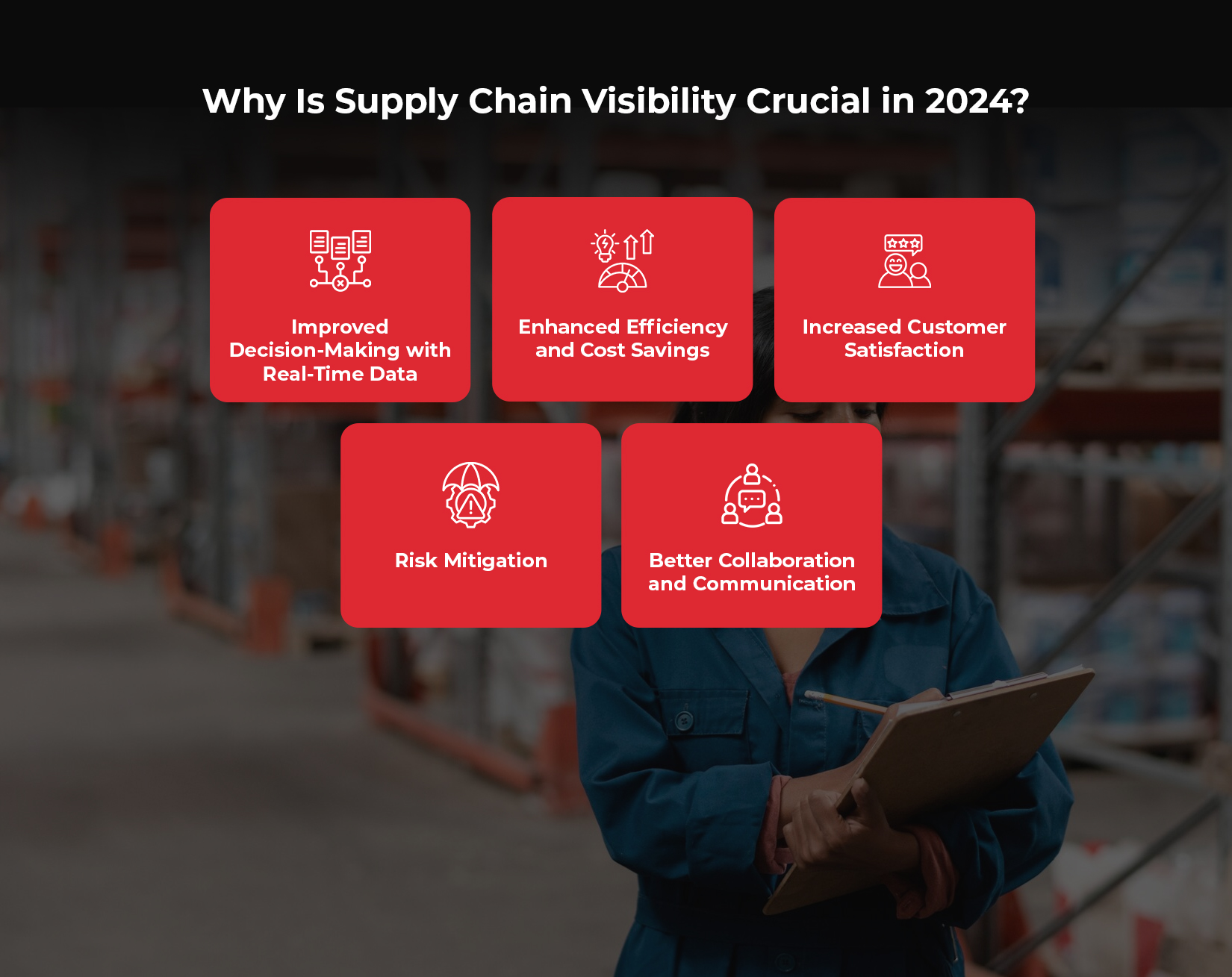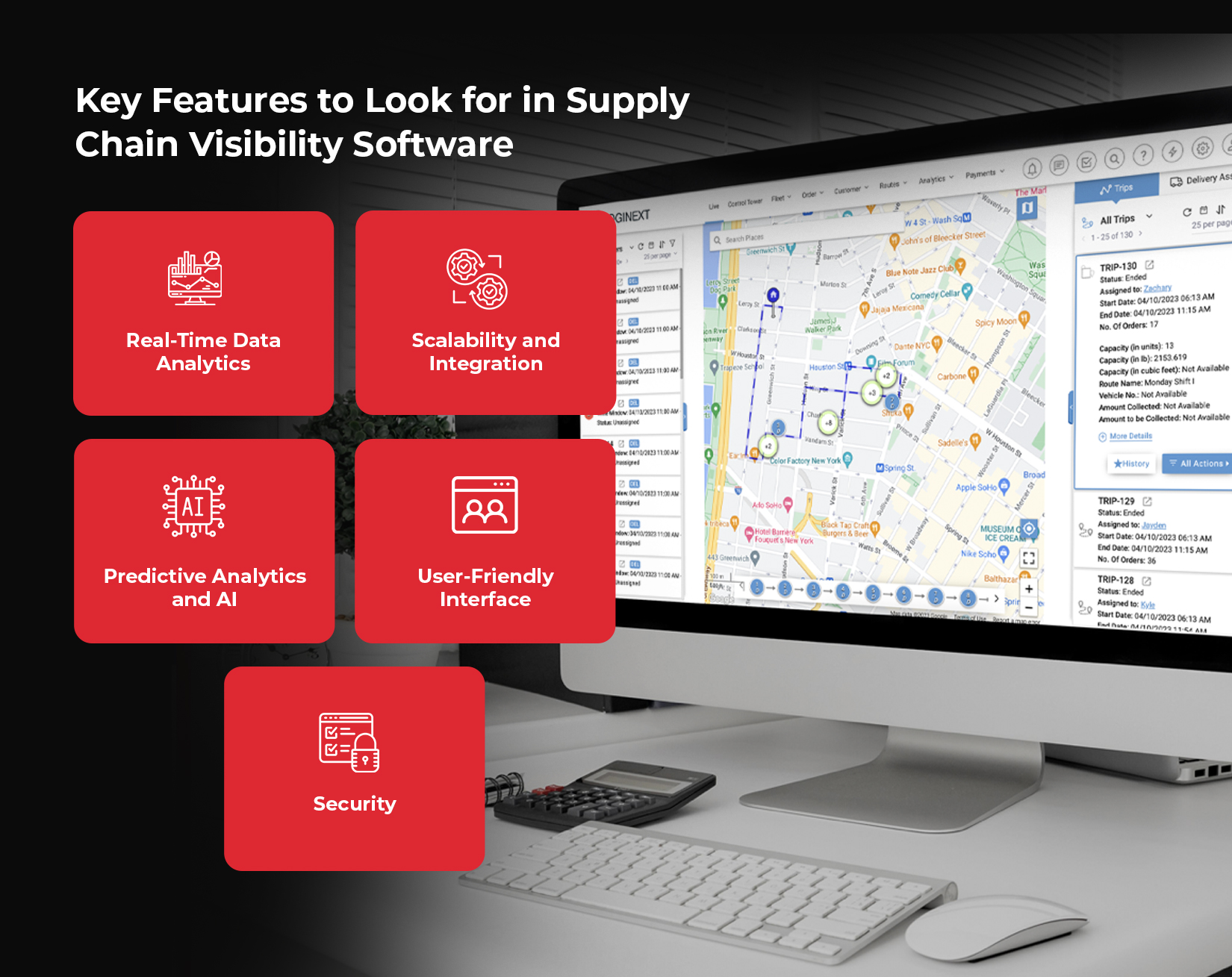
The Importance of Supply Chain Visibility Software in 2024: Why Your Business Needs It
In today’s fast-paced global market, managing a supply chain effectively is more critical than ever. Supply chain visibility has become a top priority for organizations across industries, prompting rapid advancements in supply chain visibility software. As we step into 2024, businesses that embrace these technologies are better positioned to gain a competitive edge by improving efficiency, enhancing customer satisfaction, and reducing costs.
This article delves into the importance of supply chain visibility software in 2024. Why it matters, and why your business should consider investing in the best supply chain visibility software tracking and management.
What is Supply Chain Visibility Software?
Supply chain visibility system is a digital tool that provides comprehensive insights into the movement, status and location of goods as they travel through supply chain. It enables real-time tracking and provides end-to-end visibility. This allows for better coordination across various stages, from sourcing raw materials to delivering finished products to customers.
With real-time visibility, organizations can gain a holistic view of the operations. By capturing and analyzing data in real-time, these systems help identify bottlenecks, optimize inventory, reduce lead times and enhance collaboration across partners. Cloud-based visibility has become especially popular for its accessibility and scalability. This makes it easy for teams to share information and coordinate remotely.
Why Is Supply Chain Visibility Crucial in 2024?

Global supply chains have grown increasingly complex, with companies sourcing materials from multiple countries and facing heightened customer demands. Additionally, they must manage an ever-expanding flow of data to keep operations efficient and responsive. According to a recent study by Deloitte, 62% of businesses indicated that supply chain visibility issues directly impacted their profitability.
In 2024, as companies face tighter competition, stricter regulations, and evolving customer expectations, the need for robust software to improve supply chain visibility is crucial. Effective management tools have become even more essential to keep pace with these demands.
Here’s why supply chain visibility solution is indispensable for today’s businesses:
1. Improved Decision-Making with Real Time Data:
Real-time data is at the heart of effective supply chain management. Traditional methods rely on batch updates and static data, limiting the timeliness of information. In contrast, real-time supply chain visibility solution for logistics continuously provides fresh, accurate data to decision-makers. This enables quick response to changes, whether its adjusting inventory levels in response to a demand surge or rerouting shipments to avoid potential delays. A study by ARC Advisory Group found that companies using real-time visibility tools reduced decision-making times by 25%.
2. Enhanced Efficiency and Cost Savings:
Visibility software can streamline supply chain operations by identifying inefficiencies and reducing waste. For example, companies can better manage inventory levels by ensuring products are always available when needed, reducing excess stock and cutting storage costs. According to Gartner, real-time visibility solutions could reduce operational costs by up to 10% for companies with complex logistics networks. McKinsey & Company reported that companies using visibility software could reduce logistics costs by an average of 15%. This is achieved through optimized routing and improved asset utilization.
3. Increased Customer Satisfaction:
In 2024, customers expect timely delivery and transparency about their orders. End-to-end supply chain visibility platform allows businesses to provide accurate delivery times and update customers if any delays occur. According to PwC, 88% of consumers are willing to pay more for faster shipping, and 63% prefer brands that offer tracking. This level of transparency not only improves the customer experience but also strengthens brand trust and loyalty.
4. Risk Mitigation:
A supply chain is vulnerable to disruptions such as natural disasters, political instability and unforeseen market shifts. Supply chain visibility solution enables companies to identify and address risks proactively by providing insights into delays or issues before they impact operations. Data from Resilinc indicates that companies using cloud-based visibility software were 20% more resilient to global disruptions in 2023. This approach helped reduce downtime and recovery costs by up to 30%.
5. Better Collaboration and Communication:
The complexity of modern supply chains requires seamless collaboration across departments, suppliers and logistics providers. Cloud-based supply chain visibility solution fosters real-time communication and allows for shared access to critical information, eliminating silos and enhancing cross-functional collaboration. Research by Harvard Business Review found that improved collaboration through visibility solutions led to a 21% increase in supply chain productivity for companies surveyed.
Key Features to Look for in Supply Chain Visibility Software

1. Real-Time Data Analytics:
Ensure the software provides real-time insights into inventory, shipping and demand patterns. This will support better, data-driven decision-making. According to a survey by MHI, 79% of companies using real-time data analytics have reported a measurable increase in operational efficiency.
2. Scalability and Integration:
Choose a solution that can scale with your business as it grows and integrates seamlessly with existing systems, like ERP and CRM platforms.
3. Predictive Analytics and AI:
AI-powered predictive analytics can forecast demand, predict potential disruptions, and recommend corrective actions, making your supply chain more resilient. Accenture reported that businesses using AI for predictive analytics reduced supply chain disruptions by up to 30%
4. User-Friendly Interface:
Opt for a solution that is intuitive and easy to use, minimizing the need for extensive training and increasing the speed at which teams can begin leveraging insights.
5. Security:
Cybersecurity is crucial, especially in cloud-based visibility software, where sensitive data may be at risk. Look for software with strong security features and compliance with international standards.
Types of Supply Chain Visibility Software- Which one is Right for You?
Not all visibility software is created equal. Choosing the right solution depends on your specific needs. Here’s a breakdown of the types:
1. End-to-End Supply Chain Visibility Software:
Ideal for companies looking to monitor every step, from sourcing to final delivery. This software offers a complete view of the supply chain, allowing for more strategic planning and execution.
2. Real-Time Supply Chain Visibility Software for Logistics:
Designed for logistics-intensive companies, this software focuses on real-time tracking, ensuring goods reach their destination on time and with full transparency.
3. Cloud-Based Supply Chain Visibility Software:
Perfect for companies needing scalability and remote access. Cloud-based solutions offer flexibility, enable global teams to collaborate, and require less on-premises IT infrastructure. Research by Logistics Management found that cloud-based solutions improved operational speed by 45% in companies with distributed supply chains.
4. Software to Improve Supply Chain Visibility and Management:
This is a broader category that includes tools for forecasting, demand planning, and optimizing inventory levels, which is crucial for companies dealing with fluctuating customer demand.
Implementing Supply Chain Visibility Software: Best Practices
1. Define Your Objectives:
Before implementing any software, clarify your goals. Do you want to reduce lead times, improve demand forecasting, or enhance customer service? Clear objectives will help you choose the right features and measure success.
2. Invest in Change Management:
New software can only be effective if the team is trained and engaged. Offer training sessions and communicate the benefits to ensure widespread adoption.
3. Start Small and Scale:
Consider starting with a pilot program in one part of your supply chain. Once the solution has proven its value, gradually roll it out across your organization.
4. Monitor KPIs and Adjust:
Define and monitor key performance indicators (KPIs) such as order accuracy, lead time, and inventory turnover. Use these metrics to assess software performance and make adjustments as needed.
How Supply Chain Visibility Software Impacts Business Growth
In 2024, real-time supply chain visibility software for logistics is no longer just a nice-to-have; it’s a must-have. Businesses that leverage this technology can not only avoid disruptions but also drive growth and profitability. According to McKinsey, companies that achieved end-to-end visibility saw up to a 20% improvement in operational efficiency and a 15% increase in customer satisfaction.
The best software for real-time tracking offers businesses a strategic advantage. By reducing costs, minimizing delays, and ensuring customers remain satisfied, visibility software creates a foundation for sustainable growth.
Also Read: Top Features to Look for in Supply Chain Visibility Software
Conclusion
Investing in supply chain visibility software is a smart move for any business seeking to stay competitive and resilient. The technology provides a host of benefits, including cost savings, enhanced customer satisfaction, and improved risk management. As global supply chains continue to grow in complexity, cloud-based and end-to-end supply chain visibility software will prove invaluable in maintaining agility, improving decision-making, and driving success.
If you haven’t yet explored the best supply chain visibility software for real-time tracking, 2024 is the year to make the leap. With the right solution, your business can achieve unparalleled transparency, increase operational efficiency, and confidently navigate an evolving global market. Click on the red button and book a demo with LogiNext.
82







@LogiNext